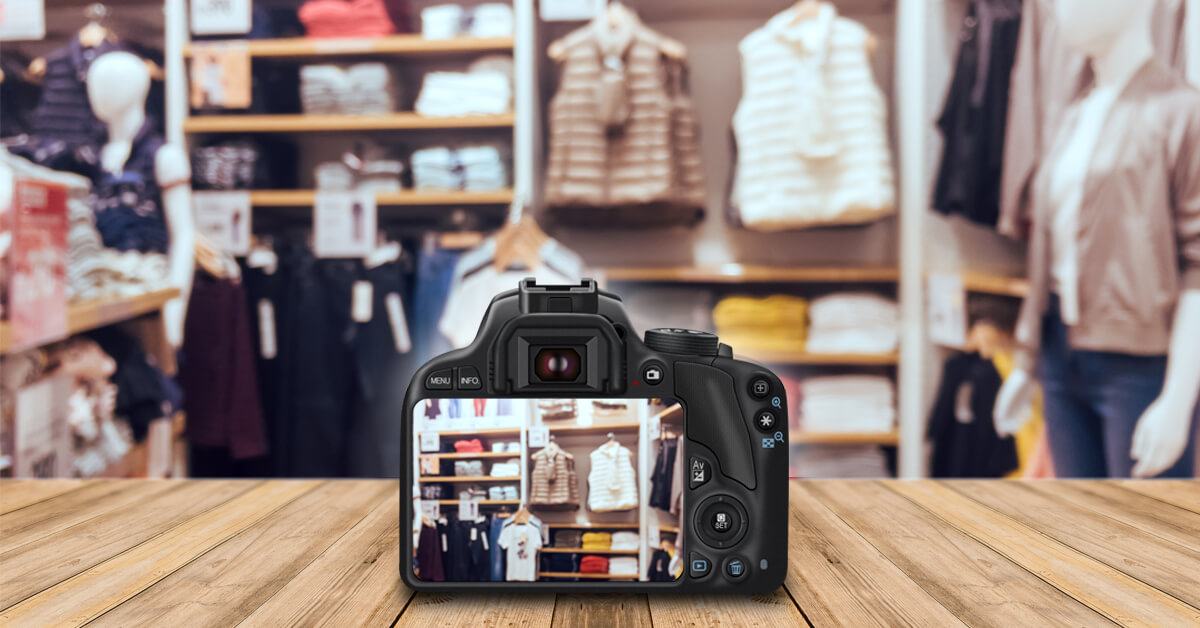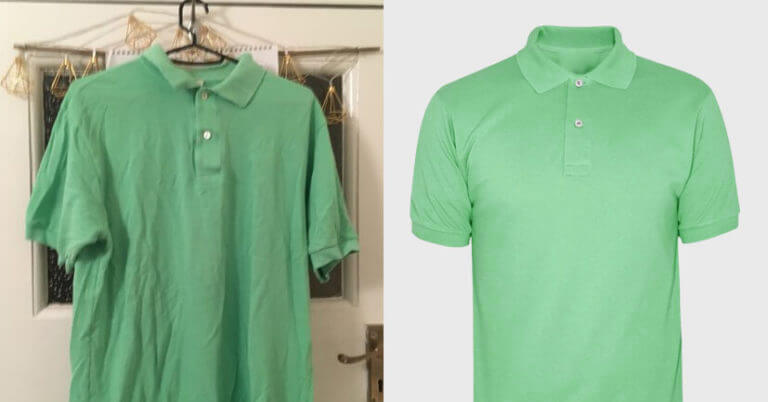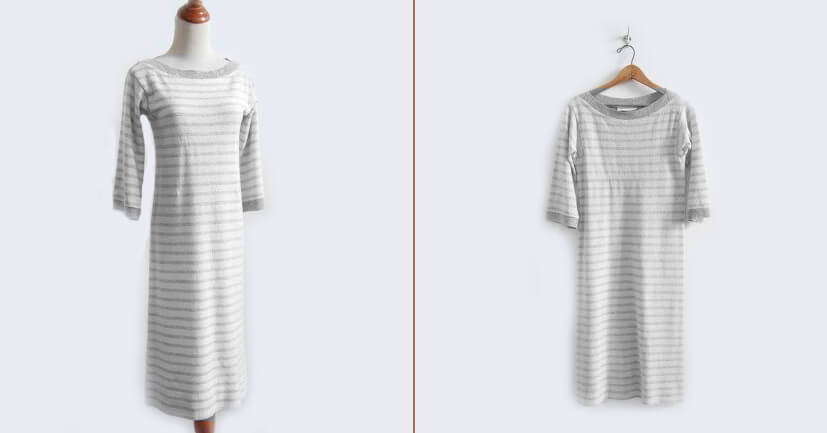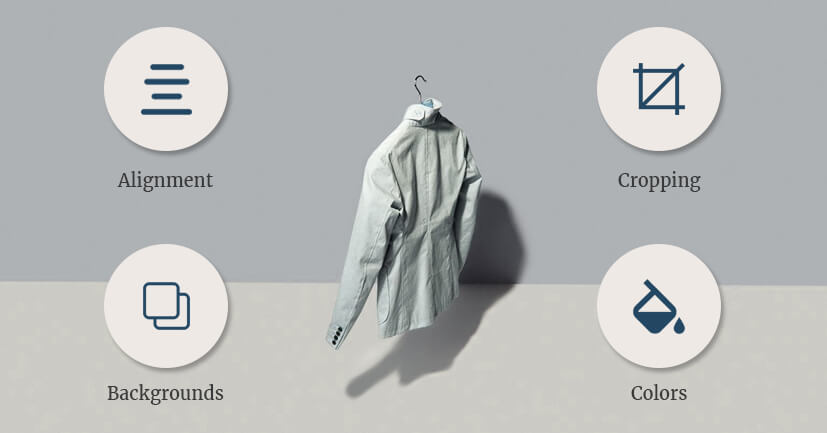
Though eCommerce is a booming industry, its only bane is that online buyers are not able to touch and feel the products. Hence, eCommerce product photography is all about detail and clarity. Especially when it comes to apparel photography, the images have to be as realistic as possible. It takes special skills to click photographs of garments and dress material. More importantly, you should be a seasoned photo retouching expert to augment the look and feel of your apparel photographs. As apparel photo editing is a niche art even the slightest mistake in retouching a garment image can ruin the whole photograph and your chances of selling the product. There are certain oversights in apparel photography and editing that may prove to be a blunder. Let’s find out more about these blunders and tips to avoid them.
1. Not Prepping The Garment

You need stunning inventory images to impress buyers. You are required to showcase your products in the best way possible. However, due to poor and rough handling, clothing can become wrinkled and creased. It even begins to look shabby and faded from storage and transport. Sellers usually tend to ignore these things and think that creases or stains can be removed through Photoshop. However, Photoshop requires skills and precision to enhance product images. If you are not an expert in Photoshop, you will surely compromise on the image quality and authenticity. Therefore, to make the clothes look their best you have to prepare them for photography. For instance, if you have wrinkled or creased apparel, always iron or steam them before clicking them for your customers. If there is dust or strings on fabric, you can use lint rollers or tape to get rid of them. Besides, you should also look for price/brand tags and stickers that need to be removed.
2. Not Using Mannequins Or Live Models

Highlighting the shape and fit of clothing to customers is indispensable when it comes to online shopping. Many apparel photographers and sellers overlook this important aspect of eCommerce. And, instead of using mannequins or live models for apparel photography, they lay clothing flat on a table/floor or use hangers to photograph them. This simply turns the customers away as they won’t get the required understanding of the attire’s size and shape. Leveraging a mannequin or a live model to showcase a garment’s shape enables customers to visualize it better. It also gives them better clarity about the attire’s fit and fabric while making the garment look more appealing. Showcasing the natural draping through a model will give the buyers a realistic idea of how the garment will fit on them. However, if you don’t have the time and budget to hire a model, you can use mannequins or use apparel photo editing services to leverage the ghost mannequin effect.
3. Ignoring Apparel Photo Editing

Many eCommerce retailers overlook the importance of photo editing in apparel photography. While some edit their product images improperly, others don’t even edit before uploading them online. Cropping, alignment, color, and backgrounds play an important role in professional product photography. All the images in your inventory have to be identical in terms of these factors.
Alignment: The products must be focussed and centered within the image so that all of the angles, corners, and edges of the product line up in relation to one another. A consistently-aligned inventory will not only look professional but will also boost the appeal of your online store and products.
Cropping: Cropping removes the irrelevant peripheral areas of an image to keep the product in focus. It also enhances the aspect ratio of the image to help you create accurate thumbnails that are centered on the image’s subject. Thus, it is imperative to identically crop apparel images in your inventory. Online marketplaces have their own guidelines for image alignment and cropping that you have to adhere to.
Backgrounds: Clear backgrounds are an essential component of product photography. While an irrelevant background looks unprofessional and distracts your customers, white or light grey backgrounds prove to be the least distracting. Choosing one background style and sticking to it not only significantly improves the professionalism and appeal of your inventory but also reduces the post-processing time.
Colors: Accurate depiction of garments’ colors plays an important role in persuading potential buyers to click on the ‘buy now’ button. Digital cameras do a fairly good job of capturing colors. However, sometimes, lighting may restrict cameras to capture the actual color. Besides, bright colors or neon colors are slightly difficult to capture. In such cases, we need to tweak the images to fix the inconsistencies.
Customers online want to see exactly what they will receive in the box. That’s why the inaccurate representation of colors often leave customers frustrated and dissatisfied when they receive the product. Thus, you must ensure that the colors of the clothing are accurate before you upload them to your online store.
You need to develop a standard set of specifications for both shooting and editing. It will keep all the apparel images consistent in relation to one another and save your time. If you want to simply concentrate on your sales process rather than worrying about your apparel photos, outsourcing photo retouching services to a specialized service provider is a great idea.
Final Words
Most sellers overlook the above-mentioned factors resulting in low-quality inventory images. Now that you know these factors, you have the opportunity to correct your workflow and create stunning product images that not only improve your inventory but also impress your customers and encourage them to buy.
There’s no denying the fact that the process of creating impressive product images requires skill, time, undivided attention and efforts. If you are unable to spare time, outsourcing is an alternative you can benefit from. At Photozworld, we provide professional apparel image editing for eCommerce businesses. Drop an email to info@photozworld.com to get a free trial today!

